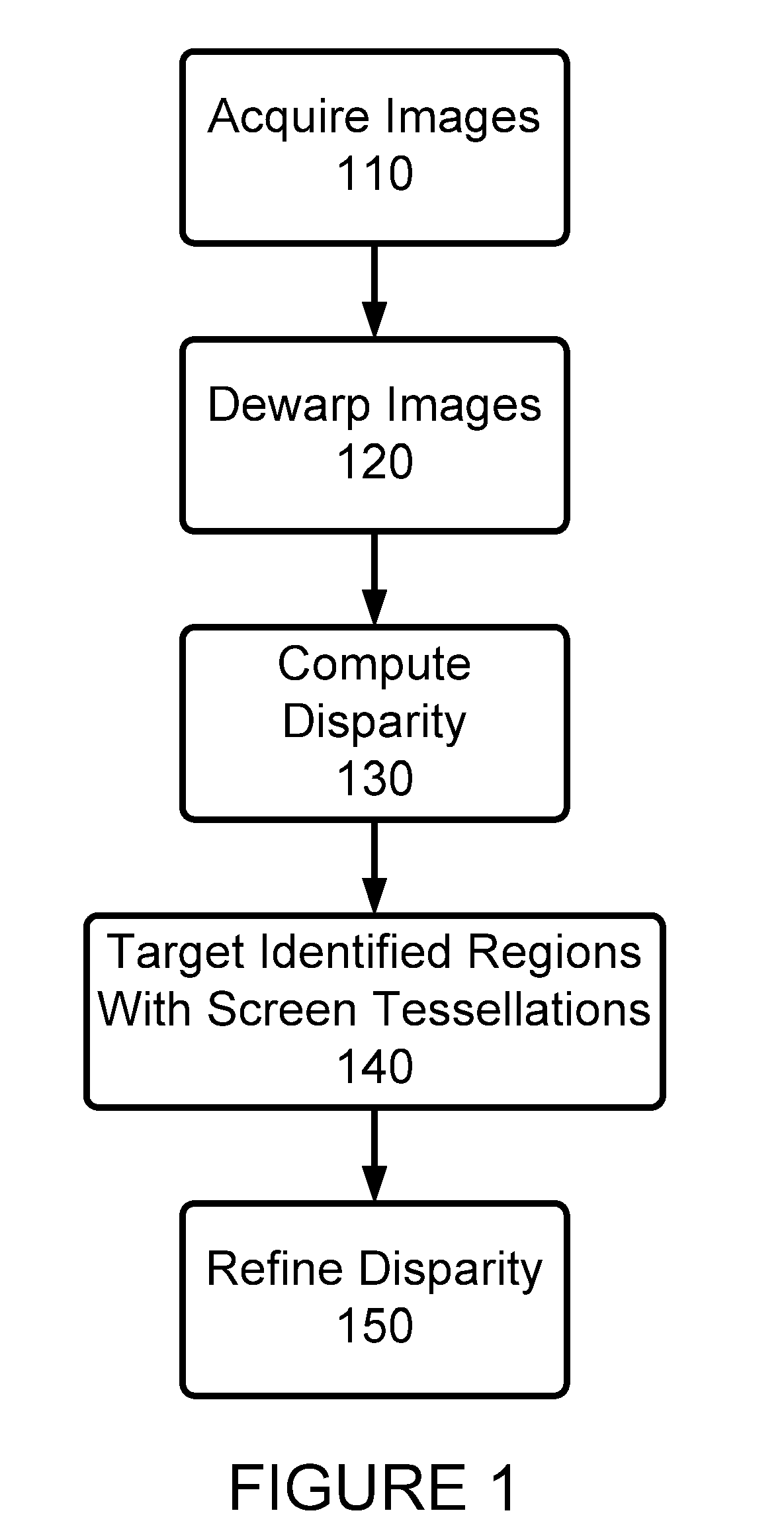Near Touch Interaction with Structured Light
a technology of structured light and interaction, applied in the field of near touch interaction with structured light, can solve the problems of unhygienic screen, multi-touch gesture responsiveness, and many problems of various single and multi-touch systems, and achieve the effect of improving the quality and consistency of depth maps and facilitating embedding
- Summary
- Abstract
- Description
- Claims
- Application Information
AI Technical Summary
Benefits of technology
Problems solved by technology
Method used
Image
Examples
Embodiment Construction
[0018]One or more embodiments of the invention will now be described, making reference to the following drawings in which like reference numbers indicate like structure between the drawings.
[0019]An overview of a preferred approach in accordance with an embodiment of the present invention is shown in FIG. 1. As is shown in FIG. 1, at step 110 one or more images are acquired, and then at step 120, these images may be dewarped if desired or determined necessary or advantageous. A disparity is computed at step 130, and at step 140 target regions may be identified and illuminated with screen tessellations. Finally, at step 150, disparity is refined.
[0020]In accordance with one or more embodiments of the present invention, wide angle lenses are preferably utilized. Such wide angle lenses allow for a wide field of view to be acquired, allow for the viewing of objects close to the cameras, and thus the display, and also produce a shallow depth of field, thus blurring a background or other ...
PUM
 Login to View More
Login to View More Abstract
Description
Claims
Application Information
 Login to View More
Login to View More - R&D
- Intellectual Property
- Life Sciences
- Materials
- Tech Scout
- Unparalleled Data Quality
- Higher Quality Content
- 60% Fewer Hallucinations
Browse by: Latest US Patents, China's latest patents, Technical Efficacy Thesaurus, Application Domain, Technology Topic, Popular Technical Reports.
© 2025 PatSnap. All rights reserved.Legal|Privacy policy|Modern Slavery Act Transparency Statement|Sitemap|About US| Contact US: help@patsnap.com



